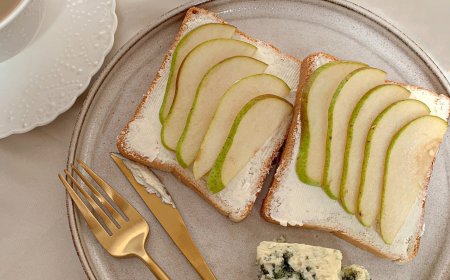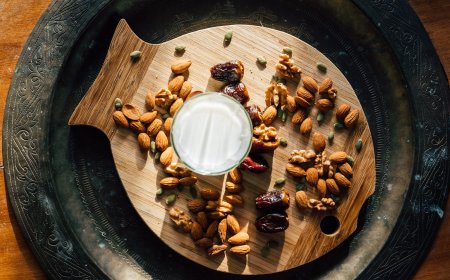How to prepare balanced healthy meals
Balanced healthy meals can be prepared by choosing a variety of fresh and nutritious foods such as vegetables, fruits, lean proteins from poultry and fish, healthy carbohydrates from whole grains, and healthy fats like olive oil and nuts, while focusing on nutritional balance and reducing processed and fatty ingredients to ensure the provision of complete healthy meals.

Balanced healthy meals can be prepared by choosing a variety of fresh and nutritious foods such as vegetables, fruits, lean proteins from poultry and fish, healthy carbohydrates from whole grains, and healthy fats like olive oil and nuts, while focusing on nutritional balance and reducing processed and fatty ingredients to ensure the provision of complete healthy meals.
How to prepare balanced healthy meals
1. Planning and Preparation: Before starting to prepare meals, identify the healthy foods you want to include in your meals, such as vegetables, lean proteins, and healthy carbohydrates. Then, schedule time for shopping and ingredient preparation.
2. Choosing Healthy Ingredients: Look for high-quality and nutritious ingredients, such as fresh vegetables, low-fat plant-based or animal proteins, and whole grains.
3. Diversifying Meals: Try to include a variety of foods in your meals to ensure you get a diverse range of important nutrients.
4. Nutritional Balance: Ensure that your meals contain balanced proportions of proteins, carbohydrates, healthy fats, as well as vitamins and minerals.
5. Preparing Pre-Made Meals: You can save time and effort by preparing your meals in advance, such as chopping vegetables or cooking proteins, to have them ready for use on later days.
6. Portion Control and Calorie Management: Make sure to consider the portion size and the number of calories you consume, keeping them within the framework of a healthy diet.
7. Enjoy the Experience: Enjoy preparing meals and experimenting with different healthy recipes and dishes, and don't forget to make the food enjoyable and delicious for you and your family.
Creative Ideas for Balanced Healthy Meals in the Midst of Daily Life
Amidst daily life, preparing balanced healthy meals can be challenging, but you can use creativity to facilitate this process and achieve nutritional balance. Here are some creative ideas for balanced healthy meals
1. Preparing Pre-Made Meals: Prepare pre-made meals over the weekend to use during the week, such as chopping vegetables and storing them in ready-to-use containers or preparing complete meals like salads and snacks.
2. Utilizing Smart Tools: Use smart tools like electric pressure cookers or food processors to quickly prepare healthy meals, such as slow-cooked meals and fresh juices.
3. Quick and Healthy Meal Prep: Look for quick and healthy meal prep recipes, such as fast lunch options with whole grains and plant-based or animal-derived proteins.
4. Changing the Routine: Renew and diversify your meals by using new and different ingredients, such as switching seasonal vegetables or using different types of proteins.
5. Time Management: Schedule time for cooking and preparation in your schedule to ensure adequate time is allocated for preparing balanced healthy meals.
6. Utilizing Healthy Fast Food: Look for healthy fast food options in restaurants or food services that offer balanced and complete meals.
7. Encouraging Participation: Involve family members or friends in the preparation process to stimulate creativity and encourage diversification of healthy meals.
By following these creative ideas, you can make preparing balanced healthy meals easier and more enjoyable amidst your daily life.
Achieving nutritional balance
Achieving nutritional balance is essential for maintaining good health and a healthy lifestyle. Nutritional balance involves consuming appropriate amounts of all essential nutrients your body needs for good health, including proteins, carbohydrates, fats, vitamins, and minerals, through consuming balanced healthy meals.
1. Eat a Variety of Foods: Include a variety of foods in your diet, such as vegetables, fruits, proteins, whole grains, nuts, and seeds.
2. Consider Proper Ratios: Pay attention to the proper ratios of proteins, carbohydrates, and fats in your meals, focusing on lean protein sources, complex carbohydrates found in whole grains, and healthy fats like olive oil and avocado.
3. Reduce Processed and Packaged Foods: Limit consumption of processed and packaged foods that contain added sugars, saturated fats, and excessive salts, which may lead to nutritional imbalance.
4. Control Portion Sizes: Monitor portion sizes to avoid overeating and maintain nutritional balance.
5. Drink Adequate Water: Drink enough water daily to help achieve nutritional balance and maintain good health.
6. Plan Balanced Meals Ahead: Plan ahead for balanced healthy meals to ensure you meet your nutritional needs fully and evenly.
7. Enjoy Balanced Eating: Eat your meals in a balanced and mindful manner to savor the flavors and promote satiety, contributing to overall nutritional balance.
By following these guidelines, you can achieve nutritional balance and enjoy a healthy and active lifestyle.
Balanced and healthy meals
Balanced and healthy meals are essential for maintaining good health and providing the necessary energy for daily activities.
1. Include a Variety of Foods: Choose a diverse range of foods to meet your body's needs for different vitamins and minerals. Include colorful vegetables, seasonal fruits, proteins such as chicken, fish, and legumes, and healthy carbohydrates from whole grains in your meals.
2. Plan Main Meals and Snacks: Plan healthy main meals containing components from each food group to ensure your nutritional needs are met. You can also include healthy snacks between main meals to help control appetite and provide energy.
3. Use Healthy Cooking Methods: Choose healthy cooking methods such as grilling, baking, or steaming to prepare proteins and vegetables, instead of excessive frying.
4. Control Portion Sizes and Ratios: Monitor the portion sizes of your meals and ensure they contain appropriate proportions of proteins, carbohydrates, fats, and a variety of vitamins and minerals.
5. Eat Regular Meals: Eat regular meals throughout the day, paying attention to breakfast, lunch, and dinner, as well as snacks if needed.
6. Determine Proper Food Portions: Use appropriate tools to measure food portions, such as cups and spoons, to help control the amount of food you consume.
7. Drink Adequate Water: Ensure you drink enough water throughout the day to maintain good hydration and promote digestive health.
By following these steps, you can prepare balanced and healthy meals that perfectly meet your nutritional needs and help you maintain overall health and an active lifestyle.
Practical Ways to Avoid Overeating
Avoiding overeating is an important part of maintaining a healthy lifestyle and achieving nutritional balance.
1. Meal Planning: Create a plan for your daily and weekly meals, ensuring to include balanced healthy meals in this plan. You can divide your meals into smaller, balanced portions throughout the day.
2. Portion Control: Estimate appropriate portion sizes for your meals and control the amount of food you consume, using dishes and utensils that help determine food portions.
3. Focus on Feeling Full: Eat your meals slowly and focus on feeling satisfied, stopping eating when you feel comfortably full without overeating.
4. Avoid Distractions while Eating: Try to avoid distracting activities while eating, such as watching television or talking on the phone, and instead immerse yourself in experiencing the food and tasting the flavors.
5. Serve Meals in Small Plates: Use small plates to serve your meals, helping to estimate food quantities and reduce the desire to overeat.
6. Eat Healthy Snacks: Consume healthy and nutritious snacks between main meals, such as fresh fruits, vegetables, or natural yogurt, to help control appetite and reduce the urge to overeat.
7. Drink Adequate Water: Drink enough water throughout the day, as drinking water before meals can help you feel full and control appetite.
Achieving the goal
Achieving the goal of consuming balanced and healthy meals requires focus, determination to adopt healthy eating habits, and consistency in implementing them.
1. Set Clear Goals: Before starting, define your goal clearly and specifically, such as consuming balanced healthy meals for each meal daily to improve your health and increase energy levels.
2. Meal Planning: Create a daily or weekly meal plan that includes balanced healthy meals, such as breakfast, lunch, and dinner, along with snacks, and make sure to include a variety of foods.
3. Smart Shopping: Gather the healthy ingredients you need for your planned meals in advance, ensuring to choose fresh vegetables, fruits, nutritious proteins, and whole grains.
4. Preparing in Advance: Prepare meal components in advance during your free time, such as chopping vegetables or cooking proteins, to be ready for use at the right time.
5. Focus on Variety: Maintain variety in your meals to avoid boredom and ensure meeting the body's needs for all essential nutrients.
6. Practice Discipline: Be disciplined in following the healthy meal plan you've set for yourself and avoid deviating from it due to temptations.
7. Monitor Progress and Adjust: Regularly assess your progress and adjust the meal plan if necessary, focusing on successes achieved and learning from challenges you may face.
8. Motivation and Reward: Motivate yourself with rewards when achieving your goals, such as allowing yourself a favorite meal or enjoying leisure time as a reward for your efforts in consuming healthy meals.
By following these practical steps, you can achieve your goal of consuming balanced and healthy meals and enjoy their health benefits.
Healthy Eating in a Busy Schedule
In a busy schedule, it can be challenging to focus on healthy nutrition and consume balanced meals. However, achieving nutritional balance and healthy eating in a busy schedule is possible by following some steps:
1. Advance Planning: Plan your meals for the upcoming days as much as possible and try to identify healthy, balanced meals that fit into your daily schedule.
2. Opt for Healthy Fast Options: Choose fast options that are healthy and balanced, such as ready-made salads, quick protein meals, or packaged healthy meals.
3. Use Smart Tools: Utilize smart tools like slow cookers or electric ovens to prepare healthy, balanced meals quickly and without much hassle.
4. Preparing Pre-Made Meals: Prepare pre-made balanced meals during your free time and store them in containers to be ready for use on later days.
5. Diversify Meals: Don't let yourself fall into a boring routine; instead, try to diversify your meals continuously to avoid boredom and ensure the consumption of all essential nutrients.
6. Offer Your Favorite Foods: Serve foods that you love and enjoy eating, while ensuring they provide proper nutrition and are balanced.
7. Maintain Focus and Balance: Despite your busy schedule, maintain focus on consuming balanced, healthy meals.
8. Flexibility and Allowing Yourself to Relax: Be flexible in your dietary plan and remember that moderate deviation from it is not a problem, just make sure to return to a healthy regimen when the opportunity arises.
By following these steps, you can maintain healthy nutrition and consume balanced meals even in a busy schedule.
Summary
Preparing healthy balanced meals requires focusing on consuming a variety of foods that contain all the essential nutrients. This can be achieved through preplanning meals, selecting fresh and nutritious ingredients, and using healthy cooking methods such as grilling, baking, and steaming. It is also important to control portion sizes and proportions in each meal, avoid overeating, and consume healthy snacks between main meals. By adhering to these steps, the goal of preparing healthy balanced meals that meet the body's needs and help maintain overall health and vitality can be achieved.
Sources
1. Centers for Disease Control and Prevention (CDC):
- Their website contains numerous articles and resources on healthy nutrition and healthy recipes.
2. Academy of Nutrition and Dietetics:
- Provides comprehensive information on healthy nutrition and healthy recipes.
3. United States Department of Agriculture (USDA):
- Features a guide to healthy nutrition and a database on the nutritional value of foods and food components.
What's Your Reaction?



























































































